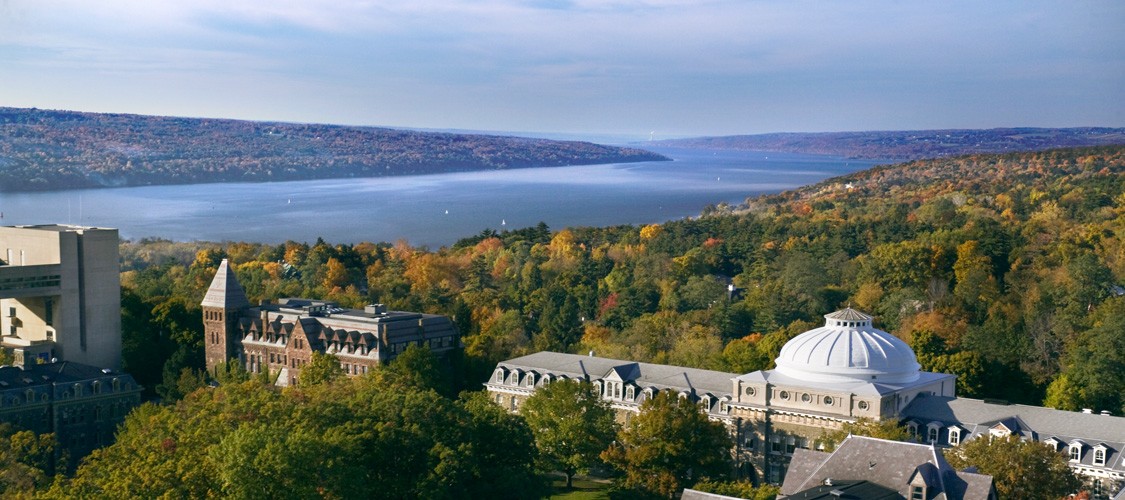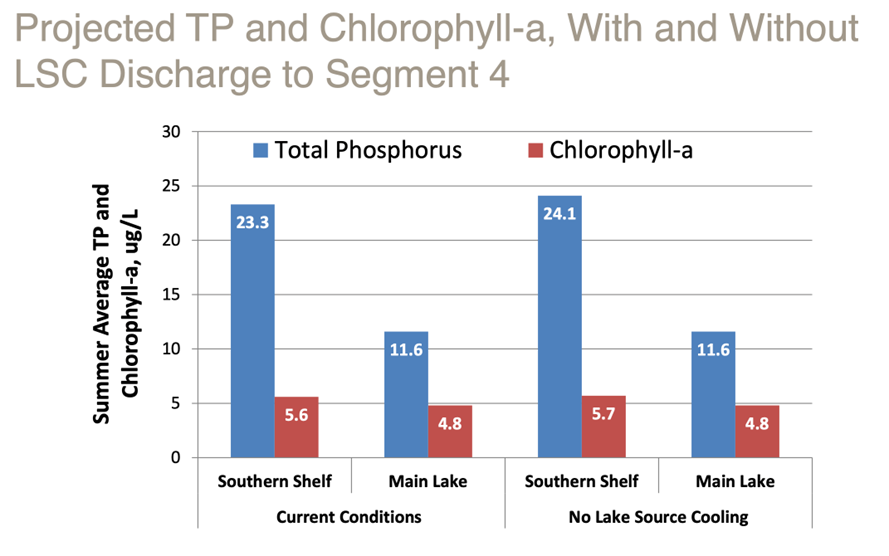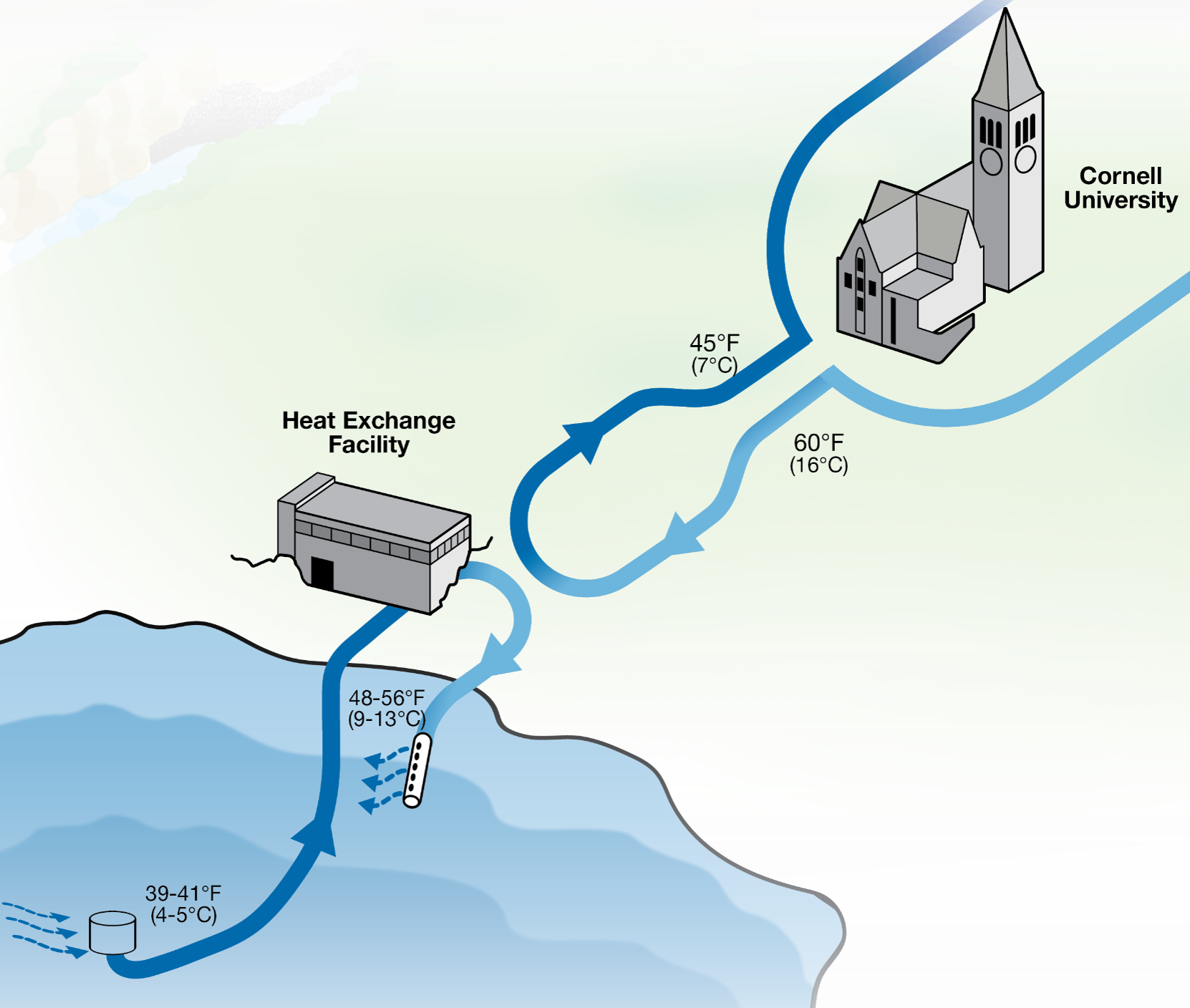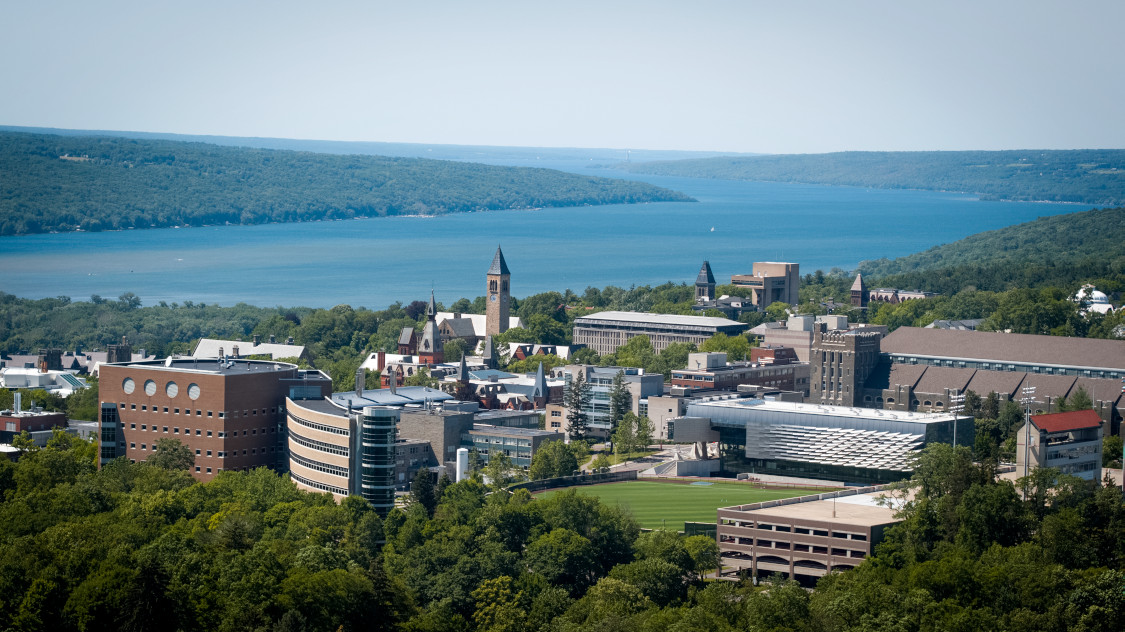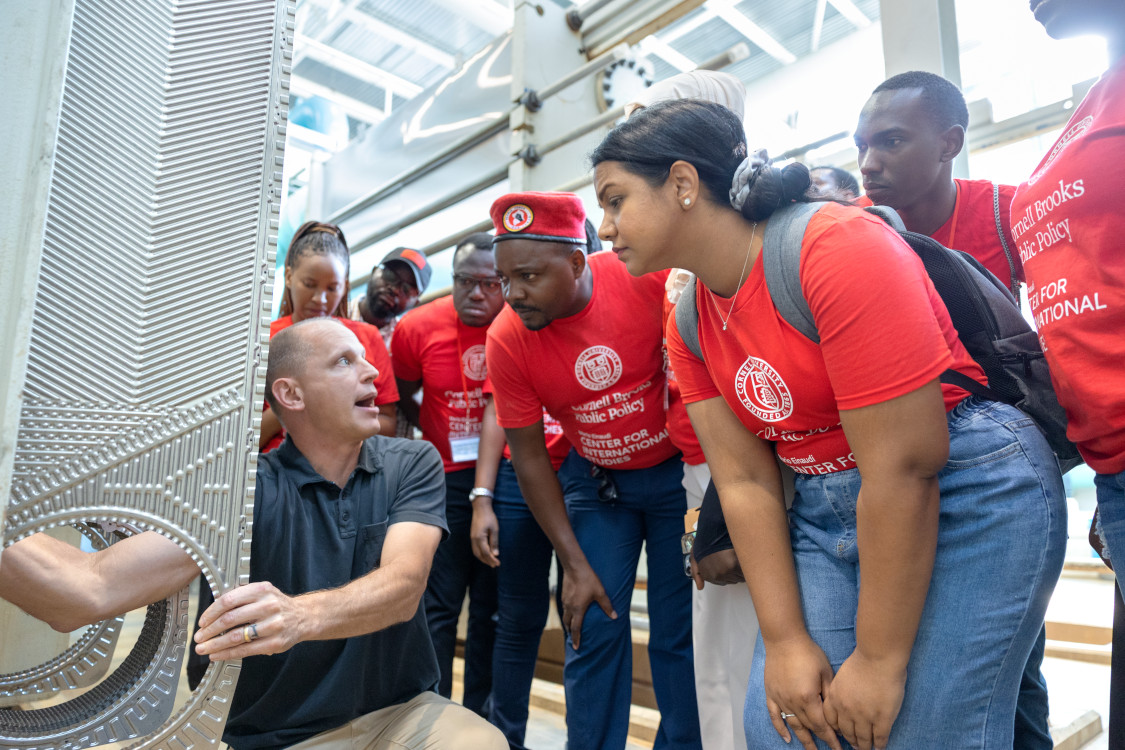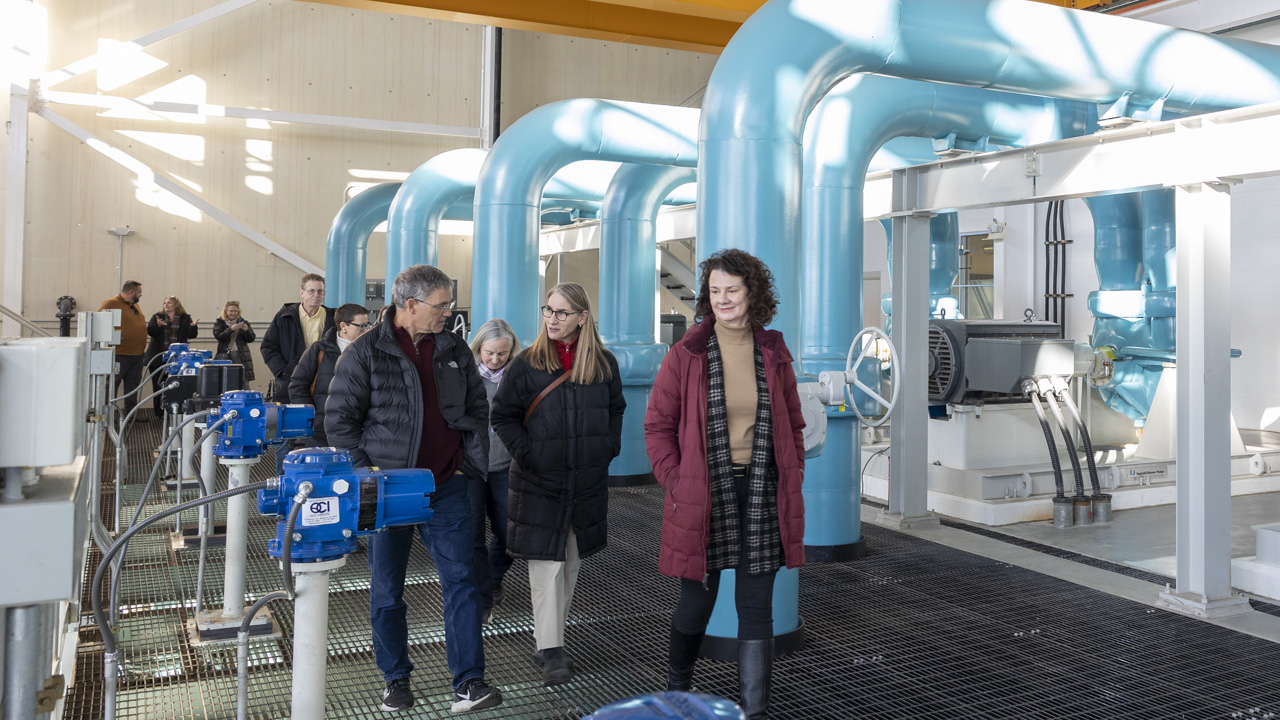25 Years, Naturally Cool — Cornell’s Lake Source Cooling
Nature-powered cooling,
conservation
at its core
Almost a decade before Cornell’s pledge to achieve carbon neutrality on its Ithaca campus, forward-thinking engineers at Cornell launched Lake Source Cooling – a moonshot innovation that anchored the university’s legacy of leadership in sustainable energy.
Twenty-five years later, Lake Source Cooling stands tall as the United States’ first major deep water cooling system, proving itself more than worthy of the phrase: “one of the most significant energy sustainability initiatives ever undertaken by an American university.”
Lake Source Cooling, Simplified
A first-of-its-kind advancement in district cooling, Lake Source Cooling (LSC) extracts coldness from Cayuga Lake’s deepest water and distributes that cooling power throughout Cornell’s campus, leaving the lake unharmed.
It’s crystal clear: The fortunate coincidence of Cornell sitting ‘far above Cayuga’s waters’ and being home to some of the best ingenuity on the planet, has created even more favorable effects than anticipated.
Planet Positive! Expected and Unexpected Positives of LSC:
- Over 25 years, Lake Source Cooling has prevented approximately 400,000 tons of carbon dioxide from being released into the atmosphere – that’s enough to offset the emissions of 924 million miles driven by gas-powered cars
- Compared with previous campus cooling methods, LSC has saved an annual average of 29 million kilowatt hours of electricity – offsetting the annual electricity used by 7,970 homes in Tompkins County
- LSC eliminates the need for refrigerants used in traditional chillers, which are among the most potent contributors to greenhouse gas emissions
- In 2024, New York’s Department of Environmental Conservation (NYSDEC) concluded that LSC has had no demonstrated impact (TMDL pg. 129) on the health of Cayuga Lake’s southern shelf
- Further, a long-term study called the Cayuga Lake Modeling Project, overseen and directed by the NYSDEC and advised by the United States Environmental Protection Agency, confirmed neutral to positive impacts on Cayuga Lake because LSC recirculates deeper, cleaner lake water into the phosphorous-laden southern end, creating gentle currents that are beneficial
- The temporary impact of LSC on the temperature of Cayuga Lake is the same as four extra hours of sunlight in the year – and that impact resets to zero every winter (LSC Environmental Impact Statement, 1998)
How it works, the quick version:
- The intake of lake water happens at a 250-foot depth, where the water temperature hovers around 39°F
- Since the lake water is circulated within a closed loop, the water returned to Cayuga Lake is the same water that was extracted, just relocated
- Cooling exchangers transfer the cooling power to a separate closed loop, which then circulates cooling to more than 100 buildings and over 8 million square feet on Cornell’s and Ithaca High School’s campuses – including the Cornell High Energy Synchrotron Source!
- After the cooling exchange, roughly 55°F lake water is gradually returned to the lake at a depth approximately aligned with the existing water temperature
- Custom filters at each end of the lake water circulation loop ensure no native aquatic life or fish are affected
Lake Source Cooling serves more than 100 buildings and over 8 million square feet on Cornell’s and Ithaca High School’s campuses
The Ultimate Living Laboratory: Real-world Impact on People’s Lives
Beyond its earth-friendly reductions in campus cooling emissions, LSC is community-friendly too! As a living laboratory, LSC models and teaches efficiency with far-reaching effects:
- Local students, both at Cornell and Ithaca High School’s New Visions program, plus various conservation organizations, study LSC to explore, research, and learn
- East Shore Park, brought to our community by LSC, is a go-to attraction that delights local paddle craft and fishing enthusiasts on hot summer days
- A portion of Ithaca High School’s campus is cooled courtesy of LSC
- LSC serves as a worldwide resource and model of innovation in renewable, efficient cooling for campuses and municipalities – not only for design ingenuity but also for exceptional efficiency, stability, and economy of operations
Take a deeper dive into Lake Source Cooling


